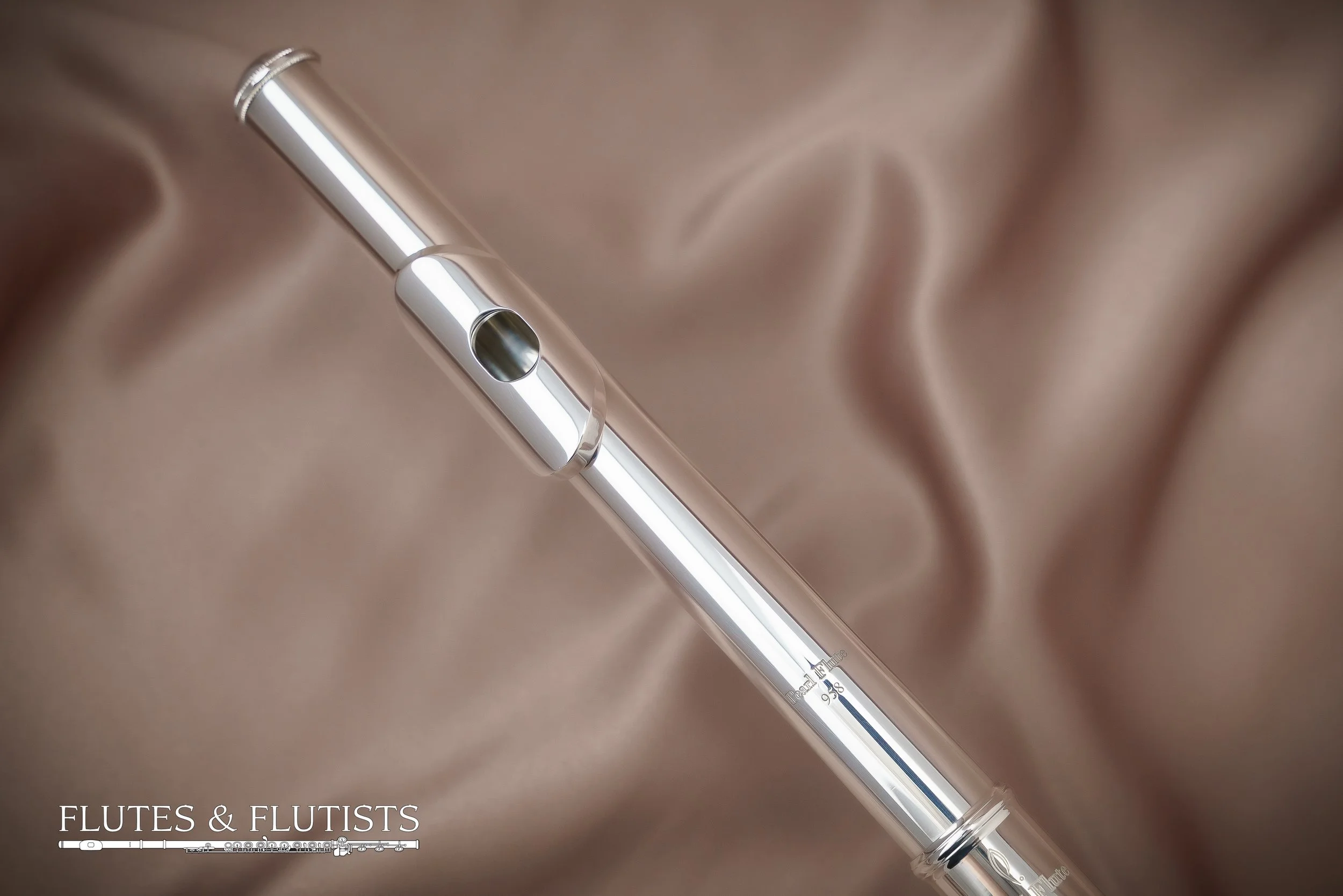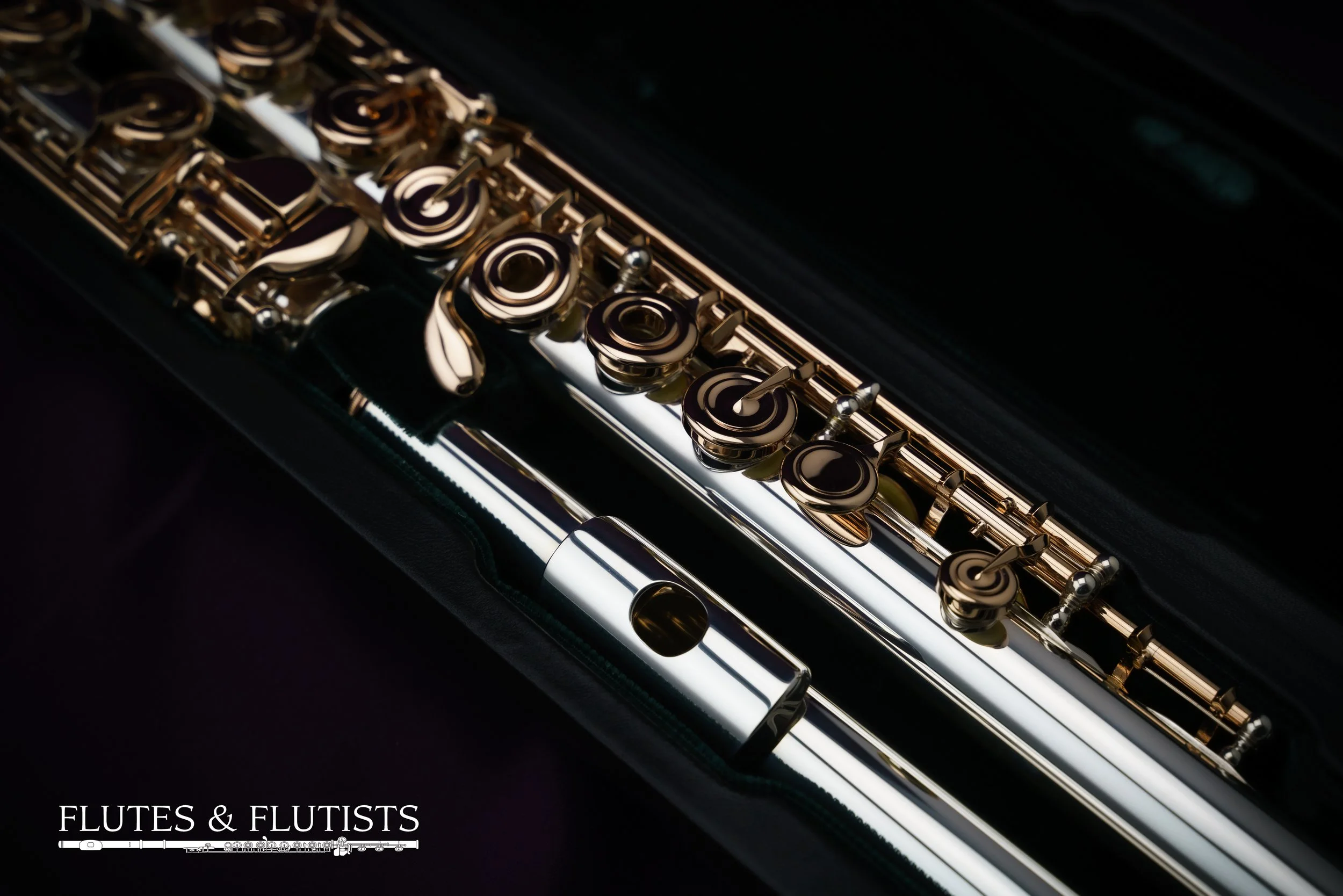Upgrading Your Flute
Upgrading your flute is an exciting experience but can also be confusing and overwhelming if you're unsure when to do it or what to look for. Several factors must be considered when upgrading an instrument, including your progression, goals, and finances.
Intermediate
Most beginner flutists start their musical journey on a student flute, usually a silver-plated instrument with closed holes and a C footjoint. Generally speaking, students are ready to upgrade to an intermediate instrument around AMEB Grade 3.
Upgrading to an intermediate flute often involves changing from a closed- to an open-holed system, as well as a C to B footjoint. Opposed to the factory manufacturing of beginner flutes, good quality intermediate instruments begin to feature hand-finished headjoints. These instruments also move from entirely silver-plated to the introduction of solid silver (or gold) lip plates, headjoints, and bodies. By upgrading to a solid silver headjoint, the flutist can achieve better tone quality and variation. Intermediate flutes should generally meet a flutist’s needs until around AMEB Grade 6 or 7.
PEARL Intermediate Flute | Elegante 795 (Flutes & Flutists 2024)
Semi-Professional
The choice to move from an intermediate to a semi-professional or professional flute is a more nuanced decision largely dependent on the flutist's goals, study and career aspirations.
If the student is to undertake music in their senior years at school but does not wish to pursue music at a tertiary or professional level, we would recommend a semi-professional flute. Flutes in this range share many similarities with intermediate flute materials. Though some parts remain machine-made, semi-professional flutes are assembled and finished by hand. This ensures the flute plays as well as possible with the maximum response and performance capabilities; hand-finishing improves the precision of the instrument design, resulting in a superior sound, more even connection across the registers, crisper articulation, and a larger range of dynamics and colours.
DI ZHAO Semi-Professional Flute | D-SP (Flutes & Flutists 2024)
Professional
Professional instruments are worth considering if the flutist hopes to study music more seriously or enter a professional music career; in this way, you may upgrade from an intermediate to a professional flute. Professional flutes are made almost entirely by hand from beginning to end by highly skilled craftspeople. This process requires an incredible amount of skill and several months to complete, a contributing factor to their high price tag. Another contributor is the variety of materials available, including Britannia silver, platinum, gold, and rare woods. Professional flutes have more construction options, including C# trill keys, drawn or soldered tone holes, and different tubing thicknesses, allowing the advanced player to customise their instrument for their desired playing experience and use.
ALTUS Japanese Handmade Flute | 1207 Atsui Ag/18K (Flutes & Flutists 2024)
Once you have defined your musical goals and desires and have chosen an instrument level and price bracket, it is important that you play-test several instruments. At Flutes & Flutists, instrument trials can be conducted in person by appointment or remotely (please contact us for details). When attending a trial, we would advise you to play a simple scale, tone exercises, and excerpts from familiar pieces that capture different styles: slow and lyrical, fast, and varied articulation. As there is a range of things to consider regarding resonance, tone colour, flexibility, and articulation, we would also encourage you to bring someone with an experienced ear along to your trial or enlist the help of the salesperson to assist in your decision-making.
Though these recommendations have been made with a typical flute student and study pattern in mind, there is no reason that a beginner could not commence flute studies on an intermediate instrument or that an intermediate hobbyist couldn't own a prestige, professional instrument. Ultimately, upgrading your flute should be a choice based on your finances and goals, the advice of your teacher or a flute expert, and your experience after play-testing various instruments.



